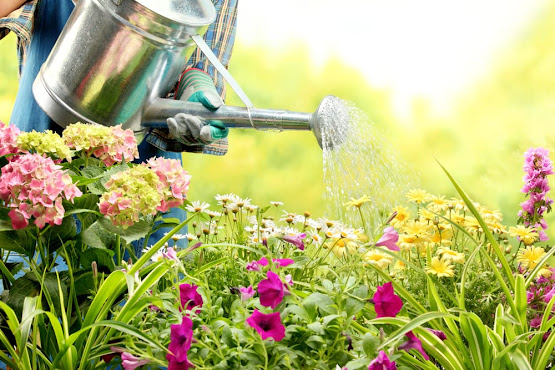A Guide to Adding Colour to Your Garden Design
 |
| Guide to Adding Colour to Your Garden Design |
The basis of our discipline's inherent phobia of colour choosing. Natural materials, which are constantly changing and being influenced by site-specific factors, are used in garden landscape design. The colour palette you select for your garden may generate distinct emotions in different regions. This can range from a relaxing impression produced by an artistic combination of soft tones, such as subdued greys, purples, and blues, to lively and energising areas packed with deep reds, vivid oranges, and zesty lime greens.
When selecting plants to create a
colour scheme in your garden
landscaping London, consider the architectural style of your home and
garden, as well as the hues used in the building materials of the house, walks,
steps, walls and fences. The Standard Colour Wheel has traditionally been
adapted for use by the majority of garden designer west london. The primary, secondary, and tertiary groups make
up the colour wheel. Red, yellow, and blue are the fundamental hues. The three
main colours are combined to create the secondary colours (green, orange, and
purple). Finally, a single primary
colour and a single secondary colour are combined to create the tertiary
colours (red-orange, red-purple, blue-purple, blue-green, yellow-green, and
yellow-orange). Tertiary colours do not have to be the last on the colour
wheel. The colour wheel itself contains a variety of colour variations, but for
our needs, the primary/secondary/tertiary categories should be adequate.
Monochromatic Colour Schemes
curated by Landscape Designer
Wimbledon
For a novice landscape designer,
choosing a monochromatic colour scheme could seem like the easiest and most
apparent option; nevertheless, this could not be farther from the reality.
Within a natural environment, a monochromatic colour palette is not conceivable
unless excessively needless landscape upkeep is used.
Complementary colour combinations
designed by Garden Designer Wimbledon
For a number of reasons, such as
the scheme's ability to create contrast or attention to certain places in the
garden, complementary colours may be quite successful. Where many complimentary
colours overlap, it can offer chances for year-round seasonal appeal. Finally, although it is easy to construct, it
seems complicated, which might give the spectator a sense of depth and
intrigue.
Analogous Color Schemes
Analogous colour schemes are
distinguished by the usage of colours that are directly next to each other in
one quadrant of the colour wheel. A garden
designer West London might emphasise this warm-cool connection in their
plant or pavement selections to bring attention and contrast to a landscape.
For more details visit our
website



Comments
Post a Comment